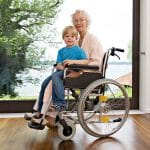Juvenile Idiopathic Arthritis (JIA) is a chronic condition that leads to inflammation in one or more joints of children under the age of 16. While medical interventions are crucial for managing JIA, studies have highlighted the significance of physical therapy and exercises as crucial elements in the management of this condition. This article aims to provide insightful guidance on designing an age-appropriate exercise program for children with JIA.
Understanding the Impact of Exercise on JIA
Before embarking on the journey to design an exercise program, it is essential to understand the role of physical activity in the health of children with JIA. Numerous studies have emphasized the benefits of regular exercise in JIA patients, though there are necessary measures to keep in mind while implementing these therapies.
Additional reading : What Are the Most Effective Treatments for Seasonal Pollen Allergies in Urban Environments?
Research has shown that children with JIA often experience a reduction in physical capacity compared to their healthy peers. This diminished capacity can impact their overall health and quality of life. However, with the right kind of exercise program, these effects can be mitigated.
A study conducted by the Arthritis Foundation found that aerobic exercise helped reduce pain and improve function in children with JIA. Regular physical activity has also been found to improve bone health, cardiovascular fitness, muscular strength, and flexibility. Moreover, studies have indicated that exercise interventions do not exacerbate disease activity or pain in JIA patients.
This might interest you : What Impact Does Bipedal Versus Quadrupedal Movement Training Have on Functional Mobility?
Furthermore, children participating in group exercises have shown a more positive attitude towards physical activity. This social aspect can motivate children to continue their exercise regimen, which in turn promotes better health and well-being.
Incorporating CHAQ Measures in the Exercise Program
The Childhood Health Assessment Questionnaire (CHAQ) is a tool used to assess the functional ability of children with JIA. CHAQ scores provide quantitative measures that can be used to gauge the impact of the disease on a child’s daily life, making it an essential component in designing an exercise program.
When creating an exercise program, it’s crucial to incorporate interventions related to the child’s CHAQ score. For instance, if a child has difficulty with fine motor skills, the exercise program should include activities that enhance these skills.
Developing a program that aligns with CHAQ measures ensures that the exercise regimen addresses the unique needs and abilities of each child. It also provides a framework to monitor progress and make necessary adjustments to the program over time.
Designing the Exercise Program: Age and Disease Specific
The design of the exercise program should be specific to the child’s age, physical condition, and disease severity. The program should include a blend of aerobic exercises, strength training, and flexibility exercises. These activities can range from simple tasks like stretching and walking to more complex ones like swimming and cycling.
For younger children, fun, play-based activities can be an effective way to introduce exercise. Incorporating games while maintaining the focus on therapeutic movement can help sustain the child’s interest and help them maintain a regular routine.
Teenagers, on the other hand, may benefit from more structured exercises that can be performed both individually and in a group. Including them in the decision-making process regarding their exercise program can foster a sense of ownership and motivate them to stick with the program.
Implementing the Program: Monitoring and Adjusting
Once the program has been designed, it’s time for implementation. It’s vital to remember that starting slowly and gradually increasing the intensity of the exercises is the key to a successful exercise regimen.
The child’s response to the program should be monitored closely. Regular tests and assessments can help track progress and measure the impact of the exercise program on the child’s health. Pain levels, joint mobility, overall strength, and energy levels are important indicators to monitor.
The program should be flexible, allowing for adjustments based on the child’s progress and response. If an exercise causes pain or discomfort, it should be modified or replaced with a more suitable one. Regular feedback from the child and their parents can provide valuable insights into how the program is working and what changes need to be made.
Bringing Together the Healthcare Team, Child, and Family
Lastly, a successful exercise program for children with JIA is a collaborative effort involving the child, family, and healthcare professionals. The healthcare team, including the child’s pediatric rheumatologist and physical therapist, plays a critical role in developing and implementing the exercise program.
Family involvement is equally important. Parents and caregivers can provide ongoing motivation and support for the child, fostering a positive environment that encourages regular physical activity.
The child’s perspective and preferences should also be considered in the program design. By incorporating their interests and feedback, it’s possible to create an engaging and effective exercise program that promotes better health and quality of life for children with JIA.
Remember, designing an age-appropriate exercise program for children with JIA is a process that requires careful consideration, ongoing assessment, and a team effort. With the right approach, you can help these children lead healthier, more active lives.
Addressing Outcome Measures in the Exercise Program
A comprehensive exercise program for children with JIA should account for specific outcome measures like range of motion, physical activity level, aerobic capacity, functional ability, and quality of life. These measures are vital in assessing the progress and efficacy of the exercise program.
Research available on Google Scholar suggests that these outcome measures can significantly improve with regular, structured physical activity. For example, studies have shown that children with JIA can increase their range of motion through regular stretching exercises. Similarly, aerobic exercises like swimming or cycling can enhance cardiovascular health and aerobic capacity.
Additionally, exercise therapy can improve the functional ability of children with JIA. By focusing on specific muscle groups and joints affected by arthritis, exercise programs can help children regain control over their movements and lead a normal, active life.
Furthermore, physical activity plays a critical role in enhancing the quality of life of children with JIA. Regular exercise can boost self-esteem, reduce symptoms of depression and anxiety, and promote a positive attitude towards health and well-being.
The outcome measures should be incorporated into the program design and monitored regularly to evaluate progress and make any necessary adjustments. These measures provide objective data that can inform the program’s direction and measure its success.
The Role of Exercise Program in Arthritis Care
In the context of juvenile idiopathic arthritis care, an age-appropriate exercise program serves as a valuable component that complements medical interventions. Singh-Grewal, a renowned pediatric rheumatologist, emphasizes the importance of exercise therapy in managing JIA’s symptoms and enhancing the child’s overall well-being.
While medical treatment is aimed at reducing inflammation and controlling disease progression, exercise therapy focuses on improving the child’s functional ability and quality of life. It helps maintain joint flexibility, builds muscle strength, and promotes cardiovascular health.
While implementing an exercise program, it is crucial to consider the child’s disease severity. Exercises should be scaled to match the child’s capabilities, and care should be taken to avoid overexertion, which could lead to an increase in inflammation and pain.
Remember to open a separate window for each child, taking into account their unique needs, capabilities, and preferences. This personalized approach ensures that the exercise program is effective and sustainable in the long run.
Conclusion
Designing an age-appropriate exercise program for children with Juvenile Idiopathic Arthritis is no small task. It requires a deep understanding of the condition, a keen eye on the child’s abilities and limitations, and a constant feedback loop to adjust and modify the plan as needed.
By incorporating outcome measures, considering the child’s CHAQ score, and taking into account the child’s age and disease severity, a comprehensive and effective exercise program can be developed. This program, when teamed with medical treatment, can play a crucial role in managing JIA symptoms and improving the child’s quality of life.
Emphasize collaboration with the healthcare team, child, and family in this endeavor. Here, we should not forget that the child is the hero of this journey. The goal is to help them lead an active, fulfilling life despite their diagnosis.
With the right blend of exercises and a supportive environment, children with JIA can undoubtedly lead healthier, more active lives. The journey may be challenging, but the rewards – improved physical health, enhanced self-esteem, and a better quality of life – are well worth the effort.











